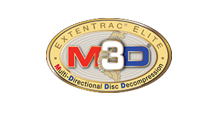
Spinecare Topics
Advancements in Spine Care and Spine Surgery
One of the greatest advances in spine surgery has been the emergence of image-guided surgery. Image-guided surgery enables spine surgeons to see and navigate through the patient's anatomy in a three-dimensional (3D) format in real time before and during surgery. The ability to perform image-guided surgery is the result of the merging of a variety of technologies including computers, sophisticated software, specialized surgical tools, accurate lighting, instrument sensors, virtual measurements, and precision position-measurement systems. The use of such technologies results in greater surgical accuracy, increased ability to apply minimally invasive surgical techniques and improved patient outcome.
Computer image-guided spine surgery is much more capable of precise localization than plain X-rays. The technology incorporates a combination of X-ray studies and computer processing of images to provide the surgeon with precise intra-operative guidance. It is important for the surgeon to know where he or she is at all times to minimize tissue compromise and to help ensure adequate tissue resection. In summary, advanced spinal navigation technology allows the surgeon to be more accurate in the placement of spinal instrumentation, to be more precise during nerve decompression and to be more exact during tumor or other tissue resection.
Acquired 3D images can be magnified, rotated, enlarged, flipped, angled, or manipulated in a variety of other important ways. Virtual lighting can be modified to enhance visualization on the multidimensional model. This type of modeling allows the surgeon to accurately plan the surgical procedure including precise determination of the type and size of instrumentation required (e.g. screws), as well as the path of implant placement and trajectory. This type of sophisticated pre-operative planning will help ensure a successful post-operative outcome. This type of technology is extremely helpful when dealing with a patient who has a unique spinal deformity or anomaly.
During spine surgery instruments can communicate information to a computer and the surgeon in real time. The spine surgeon can view this relationship to the spine on a computer monitor as he precisely operates on the spine. The digital projection allows the surgeon to see a perspective or relative position of the surgical instruments that cannot be directly observed during the operative procedure. On the computer monitor, the surgeon can see the position of the instrument as it relates the patient's anatomy helping to orient the physician to the position of the surgical instruments.
Computer assisted spine navigation or image guided surgical technology provides the surgeon with an opportunity to view the spine from multiple perspectives during the operative procedure. Pre-operative image acquisitions and three-dimensional modeling can assist surgical planning. Pre-operative virtual surgical planning can be very important especially when utilizing instrumentation. The dimensions of spinal implants can be entered into the computer and virtual placement can occur making the surgeon aware of the physical relationships between the spine, its contents and the surgical implants.
2 3 4 5 6 7 8 9
















